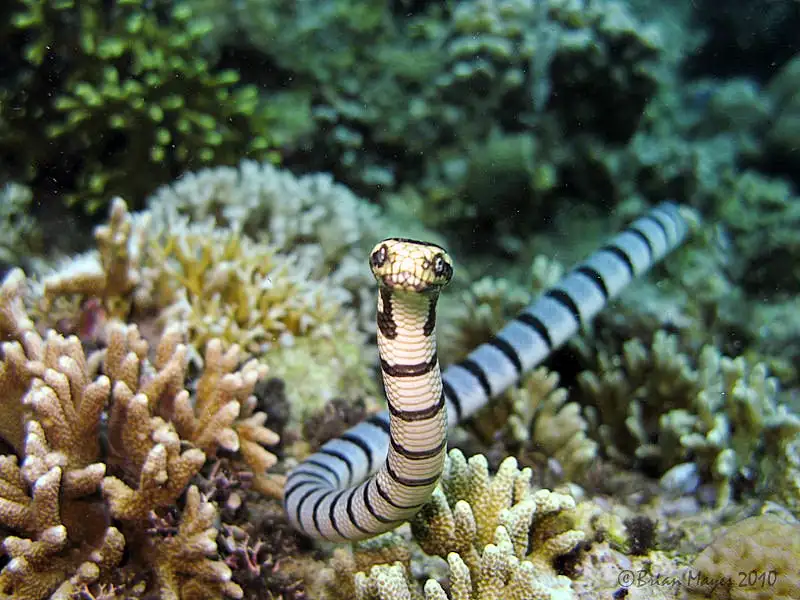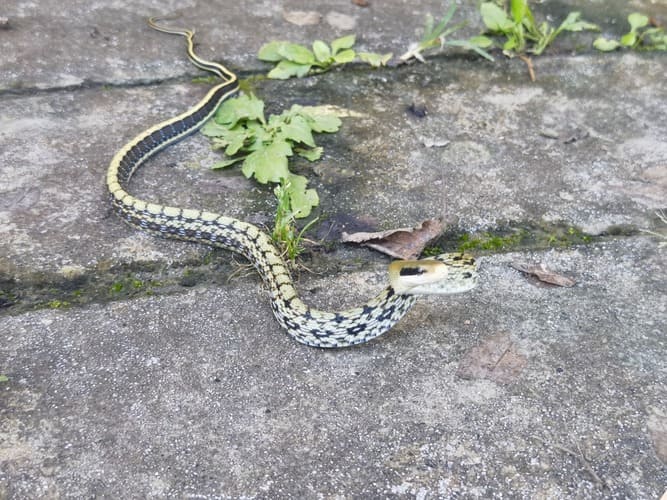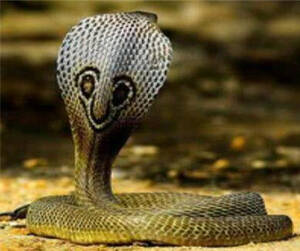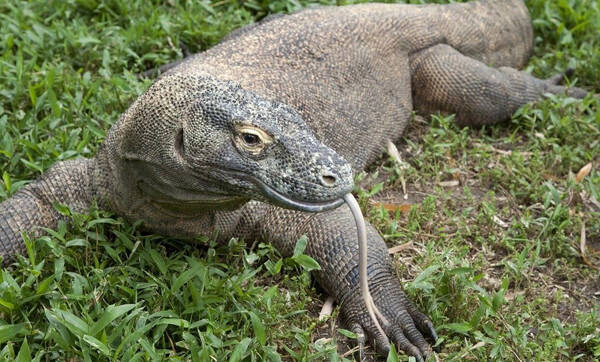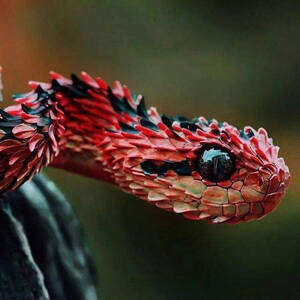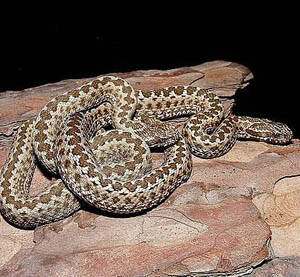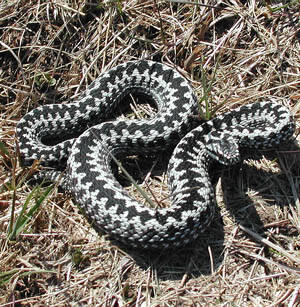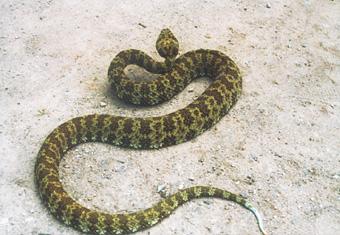Laticauda semifasciata
IUCN
LCBasic Information
Scientific classification
- name:Laticauda semifasciata
- Scientific Name:Laticauda semifasciata,Semi-ringed flat-tailed sea snake
- Outline:Squamata
- Family:Elapidae G.Cobra
Vital signs
- length:Up to 120 cm
- Weight:No verification information
- lifetime:About 20 years
Feature
Mild in nature, highly toxic
Distribution and Habitat
The semi-ringed flat-tailed sea snake is mainly distributed in the western Pacific region. In China, it is mainly concentrated in Liaoning (Dalian), Fujian (Pingtan), Taiwan and other places. At the same time, it is also distributed in Indonesia, Papua New Guinea, the Philippines and Fiji. The northernmost distribution is along the coast of the Ryukyu Islands in Japan.
It often lives in reefs or coral reefs near the coast or on the edge of the island.
Appearance
The head and neck are not clearly distinguished; the body is cylindrical; the tail is flattened laterally. The body length can reach 1209mm. The whole body is dark brown, the ventral color is lighter, with 35-39+5-7 blue-brown rings, the width of the rings is about 3-5 scales on the back, about 2-3 ventral scales on the ventral side, and each ring is separated by about 1 dorsal scale on the back. The snout scales are split into two, and the upper part is embedded between the left and right nasal scales; the nostrils are lateral, with 2 internasal scales; there is a pentagonal small scale embedded between the left and right frontal scales; the frontal scales are large, longer than wide, and shield-shaped; there is 1 preorbital scale and 2 postorbital scales; there are 2+3 temporal scales; there are 7 upper lip scales, 2-2-3 type; there are 7 lower lip scales, and 3 small scales are embedded in the margins of the 3rd to 6th lower lip scales; there is a pair of frontal plates, and the fir
Details
The Latin name of the semi-ringed flat-tailed sea snake is Laticauda semifasciata. It is a reptile of the genus Laticauda in the family Elapidae, with no subspecies.
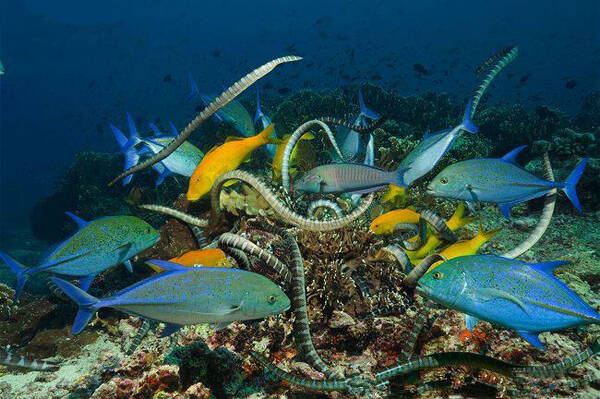
The semi-ringed flat-tailed sea snake lives in water most of the time, but also enters land for mating, digesting food, resting and laying eggs. The activity time is mainly concentrated in the daytime. It hunts prey by smell, and its prey will vary depending on individual differences. It preys on small fish and shrimps. During the hunting process, once it finds prey, it will inject venom and usually swallow it quickly. The swallowing process usually starts from the head first. It has a gentle temperament and prefers to escape when in danger. Even if it tries to attack, it is very slow, but its toxicity is very strong.
The semi-ringed flat-tailed sea snake is oviparous. It lays eggs in groups in rocky reefs or coral reef caves or cracks from mid-October to early December every year. Each time, 3 to 7 snake eggs are laid. The snake eggs will be half immersed in water and incubated. The baby snakes will hatch from January to March of the following year. The incubation period is about 160 days.
There is a short-chain neurotoxin erahutoxin (ETX) in the venom of the semi-ringed flat-tailed sea snake, which is only found in this snake. ETX has a total of 62 amino acid residues, 4 pairs of disulfide bonds, and a three-fingered semi-ring spatial structure, which is an ideal material for studying the relationship between spatial conformation and function. ETX can competitively bind to the acetylcholine receptors of the neuromuscular junction and block the transmission of nerve signals, so it is often used in neuroscience research.
It is estimated that the number of this species has declined by more than 90% since 1974. In the concentrated area of the species in central Philippines, the hunting of sea snake skins and smoked sea snakes has led to a significant reduction in the number of this species. In addition, the lack of protection measures has limited the number of distribution in the area. At the same time, the population in other ranges has not shown any signs of recovery, and the number of species is still on a downward trend. Globally, there are no specific protection measures for this species, and there are only two sea snake sanctuaries in the Philippines. Therefore, it is listed as Near Threatened by the World Conservation Union.
Listed in the 2010 "Red List of Endangered Species" of the World Conservation Union (IUCN) ver 3.1 - Near Threatened (NT).
Listed in the "China Biodiversity Red List - Vertebrate Volume" - Near Threatened (NT).
Listed in the "National List of Terrestrial Wildlife with Important Economic and Scientific Research Value" issued and implemented by the State Forestry Administration of China on August 1, 2000.
Listed in the second level of the "List of National Key Protected Wildlife in China".
Protect wild animals and eliminate game.
Maintaining ecological balance is everyone's responsibility!

